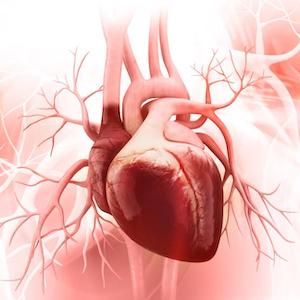Article
Extended ECG Monitoring Increases Arrhythmia Detection in Hypertrophic Cardiomyopathy
Author(s):
Results from the TEMPO-HCM study suggest that 30-day ECG monitoring in patients with HCM detects more arrhythmias than the standard 24-48 hours.
Credit: Adobe Images

Extended electrocardiogram (ECG) monitoring detected more arrhythmias in patients with hypertrophic cardiomyopathy compared with the standard 24–48 hour period, according to new results from the TEMPO-HCM Study.1
The research was presented in a late-breaking science session at the European Heart Rhythm Association (EHRA) 2023 meeting in Barcelona, Spain.
“The increased detection of arrhythmias was mainly driven by the shockingly elevated prevalence of nonsustained ventricular tachycardia (NSVT) among a non-selected and non-high-risk HCM population,” said Juan Caro Codon, Led Paz University Hospital.1 “Most studies, largely using conventional Holter monitoring, have shown a prevalence of 20%–30%.”
Evidence has shown up to 20% of patients with HCM develop atrial fibrillation over the course of the disease and experience a high risk of stroke. As a result, guidelines do not recommend the use of the CHA2DS2-VASc Score to calculate stroke risk and instead, advise starting anticoagulant treatment in all patients with HCM diagnosed with atrial fibrillation.
Moreover, data has shown that approximately 20-30% of patients with HCM have NSVT, increasing the risk of sudden cardiac death. It has been incorporated into decision algorithms to indicate an implantable cardioverter defibrillator (ICD), including in the HCM Risk-SCD prediction model recommended by European Society of Cardiology (ESC) guidelines.
Literature has recommended the use of 24–48-hour Holter monitoring in detection of both atrial fibrillation and NSVT in patients with HCM. Extended ECG monitoring has been linked to improved detection of atrial fibrillation in patients with cryptogenic stroke or after pulmonary vein isolation.
The prospective, observational TEMPO-HCM study examined whether extended ECG monitoring of patients with HCM using a continous recording system would identify a significantly greater number of clinically relevant arrhythmias compared with shorter measurement. The primary outcome was the detection of clinically relevant arrhythmias (atrial fibrillation/atrial flutter and NSVT) during the first 24 hours of monitoring versus the whole 30 day period.
Consecutive patients with a diagnosis of HCM from 5 hospitals and a clinical indication to undergo conventional ECG Holter monitoring to screen for atrial fibrillation or for risk stratification of sudden cardiac death. Participants in the study underwent extended ECG monitoring for 30 days using a dedicated device. Overall, a total of 100 patients (22% women) were included, with an average age of 57 years.
Upon analysis, extended ECG monitoring detected a higher incidence of clinically relevant arrhythmias that 24-hour monitoring (65% vs. 11%; P <.001). Data showed most patients had NSVT, which was detected in 62% of patients of patients across 30 days compared with 8% in the first 24 hours.
In those who developed NSVT during the first 24 hours, tachycardias during the whole monitoring period were faster (174 vs. 152 beats per minute; P = .001), longer (14 vs. 8 beats; P = .029), and more frequent (11 vs. 2 episodes; P <.001).
According to the HCM Risk-SCD calculator, the median estimated five-year risk for sudden cardiac death was 1.74% using data from the first 24 hours compared to 2.92% using extended monitoring data (P <.001). Data showed extended monitoring reclassified more than 1-in-5 patients (22.2%) to a higher risk category, leading to 13 (14.4%) additional patients in which an ICD may be considered and 7 (7.8%) additional patients in which an ICD should be considered.
Caro urged caution regarding the significance of NSVT episodes during prolonged ECG monitoring, noting that if a risk factor is extremely prevalent among certain patient populations, it is possible it does not adequately discriminate the true risk of sudden cardiac death.
“In the future, more complete phenotyping of the arrhythmic profile of a specific patient may aid in risk stratification,” he said. “Extended ECG monitoring may also help, but further research is needed before it is ready for clinical practice.”
Moreover, extended monitoring detected 4 more cases of atrial fibrillation than 24-hour monitoring, including 3 patients without a prior diagnosis of arrhythmia. Despite the difference between study periods not achieving statistical significance, Caro noted it may have been true with a larger sample size.
“This may be a signal of true benefit for atrial fibrillation screening and our findings justify further research one extended ECG monitoring for this indication,” Caro said.
References
- Escardio. (2023, April 17). Extended monitoring detects more arrhythmias in hypertrophic cardiomyopathy. EurekAlert! Retrieved April 19, 2023, from https://www.eurekalert.org/news-releases/986172





